A magnificent view of Barcelona, engraved on vellum, by the prominent Catalan artist Manuel Tramullas, illustrating a share certificate for the Royal Trading Company of Barcelona, issued in 1756.
This beautiful work features a panorama of Barcelona, framed in a fine architectural border, surmounted by a picture of the Virgin Mary and the Christ Child, who symbolically protect the city. In the view, one can see the spires of the Barcelona's Gothic cathedral, the city's elaborate defenses, including the fortress atop Montjuïc. Below is a fine register of text surrounded by rococo border, with the terms of the issue of the stock certificate. The piece was engraved on vellum in order to confer its durability and lend its added gravitas.
This share certificate was especially engraved for holders of the inaugural shares of the Real Compañía de Comercio Establecido de Barcelona (The Royal Trading Company of Barcelona). The Company was charted in 1755 on the orders of Ferdinand VI, and was given a monopoly on trade between Catalonia and Spanish Caribbean colonies of Santa Domingo, Puerto Rico and the Isla de Margarita (Venezuela). At the beginning of the 18th Century the Spanish Crown realized that the colonial trading system, which was under heavily government control, was woefully inefficient, leading to shortages of goods in the colonies and anemic profits for the royal treasury. Granting trading monopolies to a variety of select private companies was seen as a way to rejuvenate colonial trade.
Barcelona had for many centuries been one of the most important trading ports in the Mediterranean. However, in the early 18th Century its economy took a severe blow, from which it only very slowly recovered. During the War of Spanish Succession (1700-14), the Catalan nobles backed the losing side, preferring the established Habsburg Dynasty over the rival Bourbons. The victorious Spanish King, Philip V, vowed revenge on Catalonia. In 1716, he instituted the Nueva Planta Decrees, which rescinded Catalonia's long-cherished autonomy and placed many economic restrictions on the region's economy. This saw a marked decline in trade from the port of Barcelona and by the 1750s this factor was weighing down the entire Spanish economy. The creation of the Real Compañía de Comercio was an attempt to reestablish Barcelona's leading role in maritime trade.
The present work was engraved after a design by Manuel Tramullas i Roig (1715-1791), one of the most prominent Catalan artists of the 18th Century. He was a student and collaborator of Antoni Viladomat i Manalt (1678-1755), with whom he painted a series of frescos in the Barcelona Cathedral, that are today considered one of the highlights of the venerable church. He later specialized in drawing and painting urban life in Barcelona, and his works are considered today to be critical primary sources on contemporary Catalan urban life. His subjects were diverse, ranging from musicians to chocolatiers to opera performances. Many of his works were engraved, of which his plates for a rare book describing the elaborate funeral of the Queen Consort of Charles III, Reales exequias que a su augusta soberana Da. Maria Amalia de Saxonia… (Barcelona, 1762), are especially admired by collectors. His brother Francisco Tramullas (1717-1773) was also a well-regarded painter, who specialized in religious scenes, completing important frescos in the cathedrals of Barcelona and Tarragona.
The present work was engraved by Ignacio Valls, a leading Catalan engraver who brought many of Tramullas's drawing to print.
The present certificate is a brilliant example of 18th Century Catalan engraving at its finest and a beautiful view of Barcelona by one of the city's leading artists.









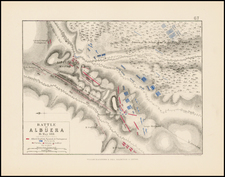
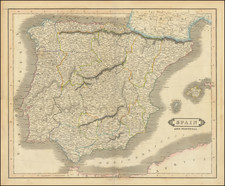
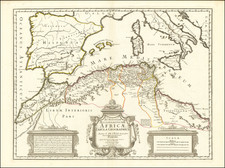
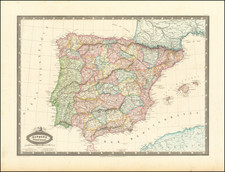
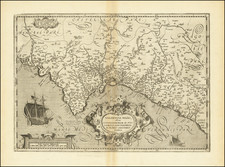
![Regnorum Hispaniae et Portugalliae Tabula Generalis jam nuper edita . . . [includes Balearic Islands]](https://storage.googleapis.com/raremaps/img/small/79438.jpg)